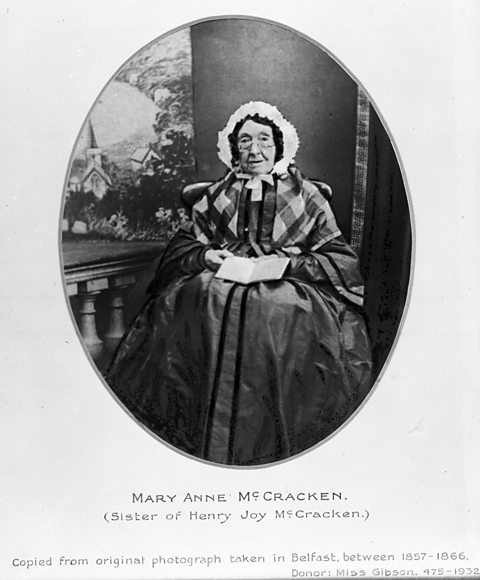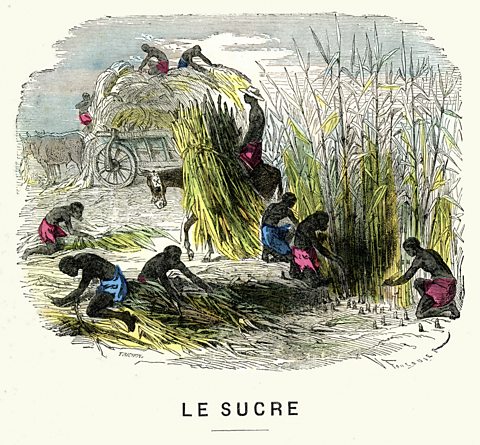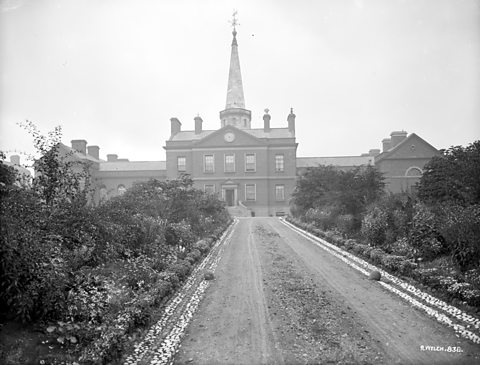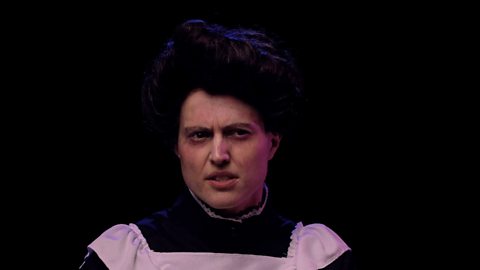 Image source, National Museums NI
Image source, National Museums NIFrom standing at Belfast harbour aged 88 handing out abolitionist leaflets to Irish emigrants, to fighting for female equality in a male dominated society - Mary Ann McCracken was unquestionably a woman ahead of her time.
Born in Belfast in 1770, she was one of seven children in a family with a strong Presbyterian background. Her father was a sea captain and her grandfather set up the Newsletter newspaper.
She attended a school that had male and female pupils (which was unusual at the time) and whose ethos was to teach ÔÇśby way of amusementÔÇÖ and reward rather than punishment, so the pupils were spared the cane, and boys and girls were treated equally.
 Image source, National Museums NI
Image source, National Museums NI
It is believed it was at school that Mary AnnÔÇÖs strong femininist spirit was formed, which led to a life-long campaign for political equality for women and for womenÔÇÖs rights in general.
A voice for the voiceless, she fought tirelessly for the disenfranchised and for the impoverished people in Belfast and beyond.Throughout her life, she campaigned for many issues including prison and social reform, the welfare of children and the abolition of ÔÇśthe diabolical system of slaveryÔÇÖ.
She led by example by refusing to eat sugar, a product of the slave trade and the West Indies plantations. With Belfast being a major industrial port in the mid-19th Century, many people about to board ships were stopped by an elderly Mary Ann giving out leaflets highlighting the evils of slavery.
 Image source, National Museums NI
Image source, National Museums NIShe was a supporter of a united, independent Ireland and lived through turbulent political times.
She was supposedly the favourite sister of Henry Joy McCracken, who was executed in 1798 for his part in the United-Irishmen led Rebellion, and Mary Ann walked with Henry as he was led to the gallows.
She became a successful businesswoman, setting up a muslin business with her sister Margaret. Her desire to help others would shine through in her business.
During times of financial hardship, when many companies were dismissing staff to cut costs, the sisters retained all their employees, taking the financial burden upon themselves, as Mary Ann ÔÇťcould not think of dismissing our workers, because nobody would give them employmentÔÇŁ.
 Image source, National Museums NI
Image source, National Museums NI Image source, National Museums NI
Image source, National Museums NIShe died in July 1866 at the age of 96. Buried in Belfast in the shadow of Clifton House, a place where she had devoted much of her time to.
Her grave remained unmarked until 1909 when her brother HenryÔÇÖs alleged remains were exhumed and placed in her grave. The inscription on the headstone read that she ÔÇśwept by her brotherÔÇÖs scaffoldÔÇÖ.
Mary AnnÔÇÖs former home in Donegal Pass, Belfast is marked with a blue plaque.
More on History makers
Find out more by working through a topic
- count8 of 15

- count9 of 15

- count10 of 15

- count11 of 15
